Come late summer, our ever-expanding collection of hydrangeas bring a much-valued boost of colour and a question that I am often asked by visitors is how to prune hydrangeas.
Most are pruned in mid-spring, ideally March or early April, their dried flower heads having been left on over winter to protect the buds beneath.
Different types of hydrangeas are pruned in different ways, as some flower on old wood and some on new. Pruning incorrectly will affect flowering.
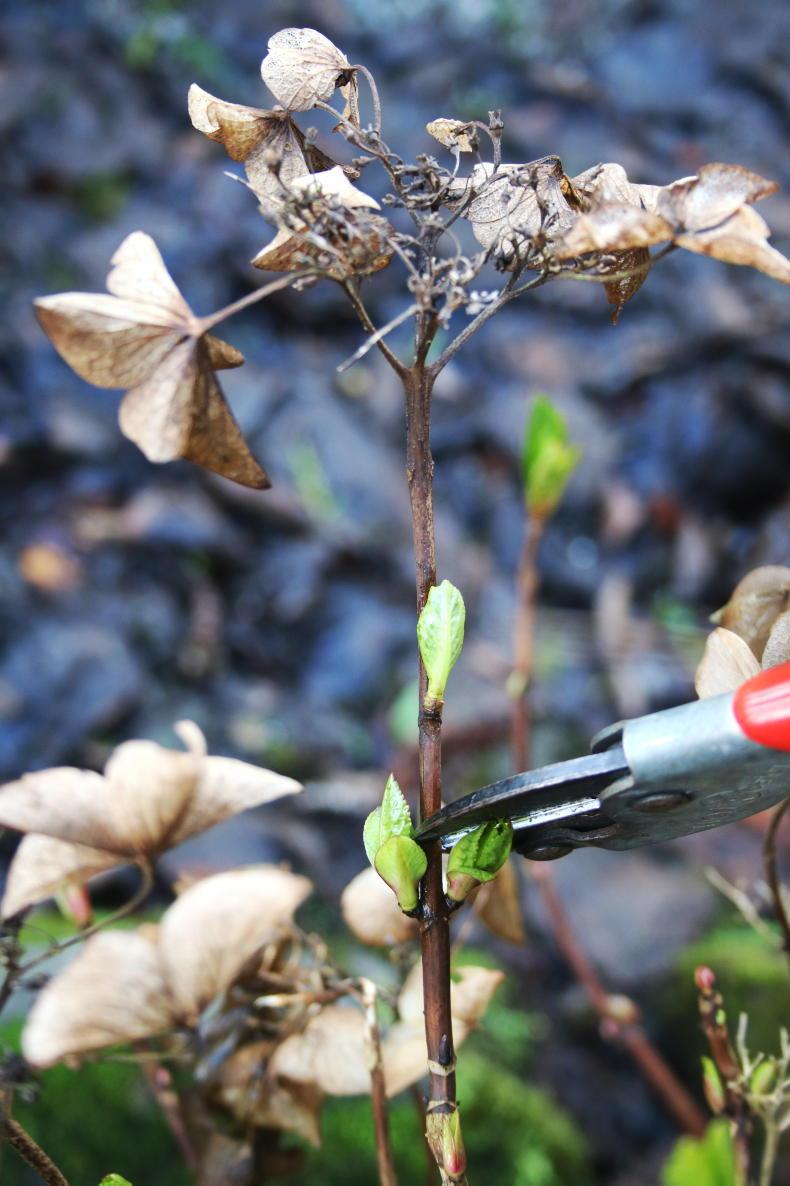
Pruning hydrangeas: Stems carrying dried flower heads on mophead Hydrangea macrophylla should be removed down to the first pair of strong buds. \ Mary Keenan
If you’re not sure which type of hydrangea you have, it’s best just to deadhead it in March and observe how it grows. If it produces flowers on this year’s new growth, you can prune it harder next year.
For mophead and lacecap hydrangeas, which produce flowers on older wood, the simplest approach is to cut about one third of the stems to the lowest pair of buds in spring and prune the remaining stems to the first pair of strong buds just below the faded bloom. Hydrangea serrata can be pruned in the same way.
Pruning paniculata hydrangeas and aborescens hydrangeas is different because these produce flowers on new growth.
To encourage the largest flower heads on hydrangea arborescens ‘Annabelle’, we cut all growth from the previous year back to within 10cm or so of the ground, just above a pair of buds, as the new shoots begin to emerge. Sometimes, the vigorous new stems will be quite slender and may need supporting.
With paniculata hydrangeas, our approach is to cut back last year’s stems to a pair of healthy buds to maintain a permanent framework from which new wood will come. To produce larger flowers, hard prune to the lowest pair of healthy buds, creating a low framework of branches no more than 30cm high. However, if more height is required, cut to about 60cm tall.
Hydrangea aspera and Hydrangea quercifolia, the oakleaf hydrangea, flower on old wood and need only light pruning to remove faded flower heads and shorten over-long stems. With established plants of Hydrangea aspera, we tend to cut up to one-third of the largest, oldest stems down as low as possible to promote growth of new shoots from the base that will be more floriferous. Climbing hydrangeas should not be pruned until the summer, after they have flowered.
Some perennials such as penstemons, Stachys byzantina and leucanthemums have the generous habit of producing roots along their green shoots. These rooted shoots can be cut from the parent plant and potted up, given as gifts to friends or planted elsewhere in the garden. Known as Irishman’s cuttings, it’s a super-easy way of propagating new plants for free.
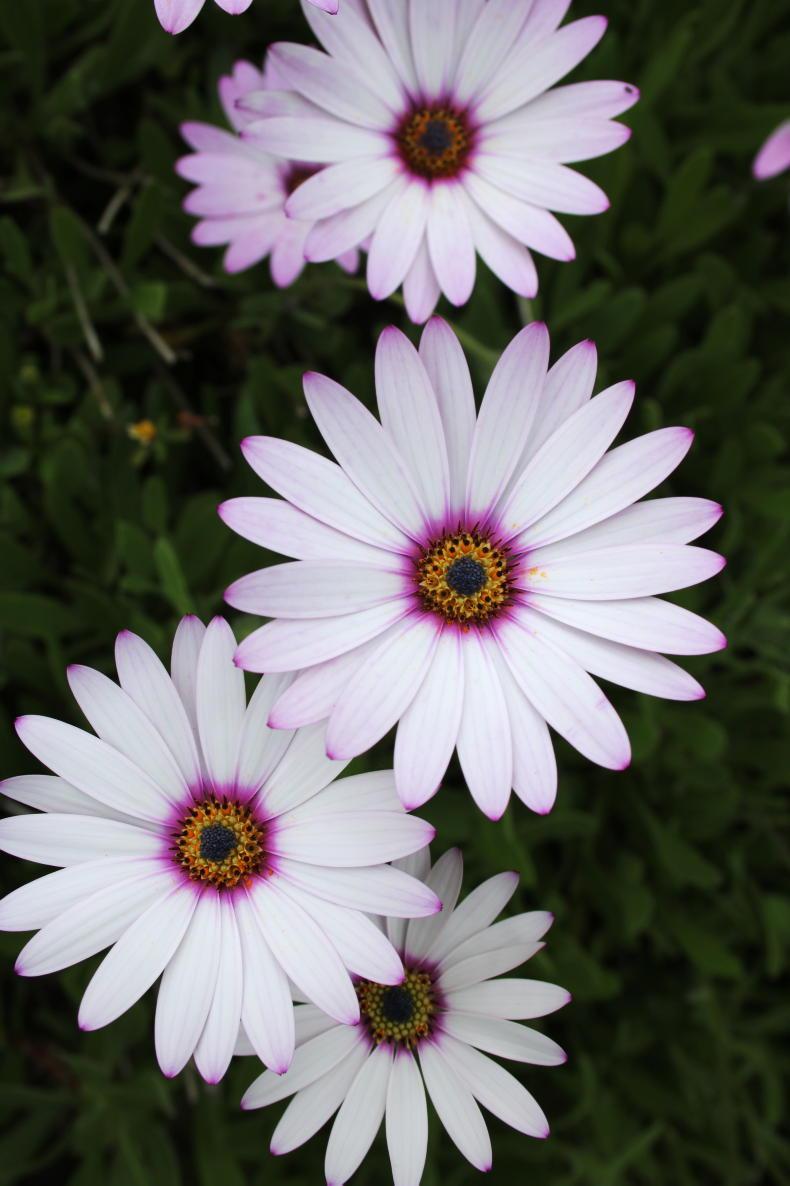
Plants for free: The African daisy, Osteospernum jucundum produces an abundance of flowers all summer. \ Mary Keenan
I was recently cutting back some sprawling stems of the lovely African daisy osteospermum jucundum and, as I cut, I noticed several stems with roots forming on their undersides. These shoots were removed, potted up and given to a friend for planting on a dry, sunny bank to provide lots of ground-covering flower power over the summer months.
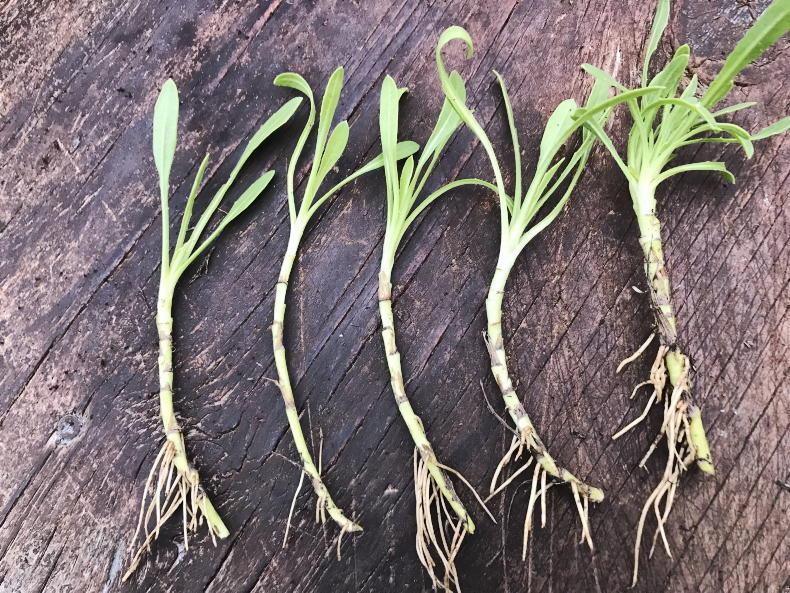
Plants for free. Irishman’s cuttings of Osteospernum jucundum. \ Mary Keenan
Watch out, too, when weeding through borders for self-sown seedlings of desirable plants. Some may have popped up in the right place and can be left in situ, especially if you practise a more relaxed style of gardening. Others may benefit from being moved and given space to expand or potted up to grow them on until they are robust enough for replanting in a suitable spot. Enthusiastic self-sowers include foxgloves, Mexican fleabane, aquilegia, calendula and Eryngium giganteum ‘Miss Willmott’s Ghost’.
Plant a tree for Tree Week
National Tree Week takes place from 20-26 March and each year we like to mark the event by planting a new tree in the garden. This year’s candidate is the ornamental crab apple, Malus x robusta ‘Red Sentinel’.
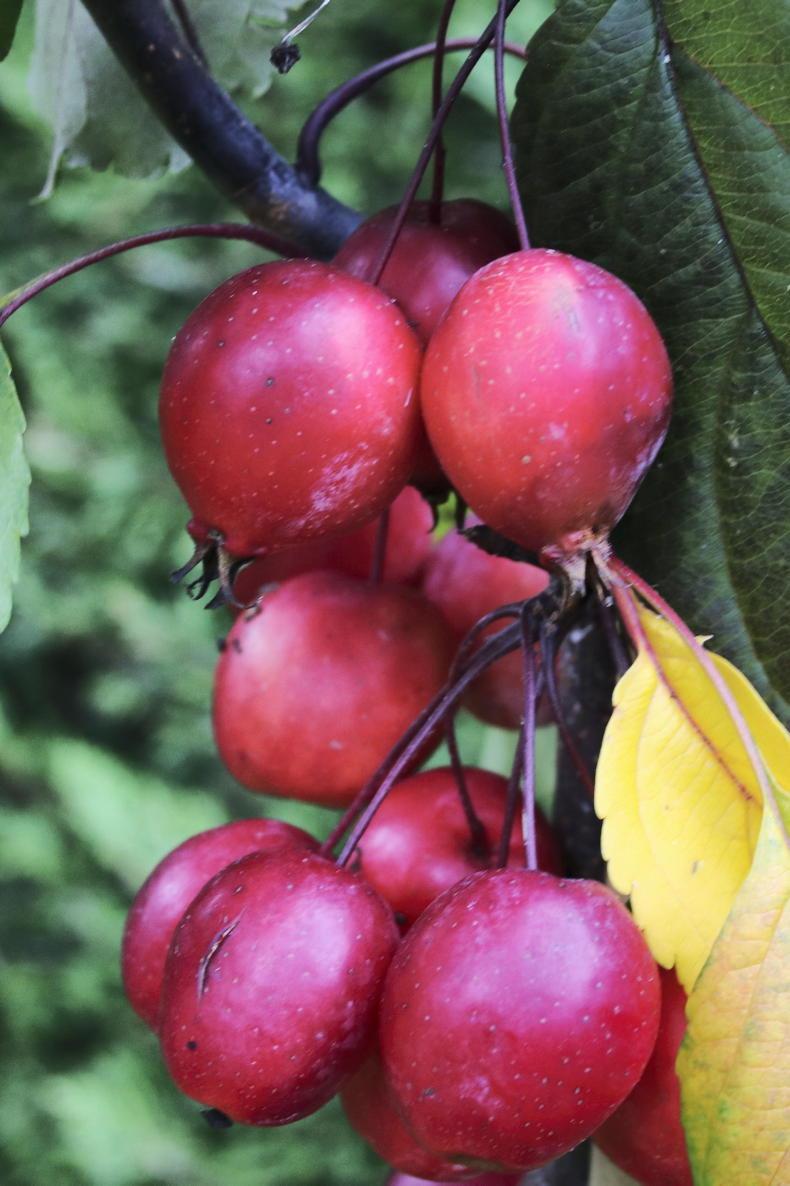
Plant a tree: Autumn fruits on Malus x robusta ‘Red Sentinel’. \ Mary Keenan
It’s an ideal tree for any size garden, especially smaller gardens, offering multi-seasonal interest. Masses of pretty, pink-tinged white flowers emerge in April and May, followed by heavy crops of glossy, deep red, cherry-like fruits that complement the yellowing leaves in autumn. These persist beautifully on the tree well into winter to eventually provide food for birds. The tree is a good pollinating partner for culinary and dessert apples.
When flowering has finished, cut out the top rosette of leaves from leggy stems of Mahonia x media cultivars to encourage branching and flowering lower down. Stems can be cut to within 30cm to 45cm of the base or main stem.If you need to move a shrub, especially an evergreen, this should ideally be done now so that it starts into active growth immediately. A transplanted shrub can quickly dry out and will need regular watering for at least the first growing season in its new position.Rather than buying more plants to fill gaps in borders, make more of your existing herbaceous perennials and ornamental grasses by lifting them and dividing them this month before leaf growth is too far advanced.Out & about spring guide for gardeners
Kilkenny Castle Talks:
A series of free garden talks in Kilkenny Castle hosted by the Office of Public Works (OPW), running form 29 March until 10 May. See www.kilkennycastle.ie. Speakers and topics include:
29 March at 8pm: Fionnuala Fallon. ‘From the garden to the vase — how to grow your own cut flowers sustainably’.5 April at 8pm: Alan Ryan. ‘Restoration of Colclough Gardens, Tintern Abbey’.12 April at 8pm: Éanna Ní Lamhna. ‘The good, the bad and the ugly’.Upcoming Plant Fairs
Members of the Irish Specialist Nurseries Association (ISNA) participate in these events, which are a great opportunity to source interesting and unusual plants as well as advice directly from the growers.
Sunday 3 April: ISNA Claregalway Castle Spring Plant Fair. Venue: Claregalway Castle, Co Galway.Easter Saturday & Sunday 16 and 17 April: ISNA Plant Fair. Venue: Irish National Stud / Japanese Gardens, Tully, Co Kildare. Read more
A warm welcome to Mary’s garden
Come late summer, our ever-expanding collection of hydrangeas bring a much-valued boost of colour and a question that I am often asked by visitors is how to prune hydrangeas.
Most are pruned in mid-spring, ideally March or early April, their dried flower heads having been left on over winter to protect the buds beneath.
Different types of hydrangeas are pruned in different ways, as some flower on old wood and some on new. Pruning incorrectly will affect flowering.

Pruning hydrangeas: Stems carrying dried flower heads on mophead Hydrangea macrophylla should be removed down to the first pair of strong buds. \ Mary Keenan
If you’re not sure which type of hydrangea you have, it’s best just to deadhead it in March and observe how it grows. If it produces flowers on this year’s new growth, you can prune it harder next year.
For mophead and lacecap hydrangeas, which produce flowers on older wood, the simplest approach is to cut about one third of the stems to the lowest pair of buds in spring and prune the remaining stems to the first pair of strong buds just below the faded bloom. Hydrangea serrata can be pruned in the same way.
Pruning paniculata hydrangeas and aborescens hydrangeas is different because these produce flowers on new growth.
To encourage the largest flower heads on hydrangea arborescens ‘Annabelle’, we cut all growth from the previous year back to within 10cm or so of the ground, just above a pair of buds, as the new shoots begin to emerge. Sometimes, the vigorous new stems will be quite slender and may need supporting.
With paniculata hydrangeas, our approach is to cut back last year’s stems to a pair of healthy buds to maintain a permanent framework from which new wood will come. To produce larger flowers, hard prune to the lowest pair of healthy buds, creating a low framework of branches no more than 30cm high. However, if more height is required, cut to about 60cm tall.
Hydrangea aspera and Hydrangea quercifolia, the oakleaf hydrangea, flower on old wood and need only light pruning to remove faded flower heads and shorten over-long stems. With established plants of Hydrangea aspera, we tend to cut up to one-third of the largest, oldest stems down as low as possible to promote growth of new shoots from the base that will be more floriferous. Climbing hydrangeas should not be pruned until the summer, after they have flowered.
Some perennials such as penstemons, Stachys byzantina and leucanthemums have the generous habit of producing roots along their green shoots. These rooted shoots can be cut from the parent plant and potted up, given as gifts to friends or planted elsewhere in the garden. Known as Irishman’s cuttings, it’s a super-easy way of propagating new plants for free.

Plants for free: The African daisy, Osteospernum jucundum produces an abundance of flowers all summer. \ Mary Keenan
I was recently cutting back some sprawling stems of the lovely African daisy osteospermum jucundum and, as I cut, I noticed several stems with roots forming on their undersides. These shoots were removed, potted up and given to a friend for planting on a dry, sunny bank to provide lots of ground-covering flower power over the summer months.

Plants for free. Irishman’s cuttings of Osteospernum jucundum. \ Mary Keenan
Watch out, too, when weeding through borders for self-sown seedlings of desirable plants. Some may have popped up in the right place and can be left in situ, especially if you practise a more relaxed style of gardening. Others may benefit from being moved and given space to expand or potted up to grow them on until they are robust enough for replanting in a suitable spot. Enthusiastic self-sowers include foxgloves, Mexican fleabane, aquilegia, calendula and Eryngium giganteum ‘Miss Willmott’s Ghost’.
Plant a tree for Tree Week
National Tree Week takes place from 20-26 March and each year we like to mark the event by planting a new tree in the garden. This year’s candidate is the ornamental crab apple, Malus x robusta ‘Red Sentinel’.

Plant a tree: Autumn fruits on Malus x robusta ‘Red Sentinel’. \ Mary Keenan
It’s an ideal tree for any size garden, especially smaller gardens, offering multi-seasonal interest. Masses of pretty, pink-tinged white flowers emerge in April and May, followed by heavy crops of glossy, deep red, cherry-like fruits that complement the yellowing leaves in autumn. These persist beautifully on the tree well into winter to eventually provide food for birds. The tree is a good pollinating partner for culinary and dessert apples.
When flowering has finished, cut out the top rosette of leaves from leggy stems of Mahonia x media cultivars to encourage branching and flowering lower down. Stems can be cut to within 30cm to 45cm of the base or main stem.If you need to move a shrub, especially an evergreen, this should ideally be done now so that it starts into active growth immediately. A transplanted shrub can quickly dry out and will need regular watering for at least the first growing season in its new position.Rather than buying more plants to fill gaps in borders, make more of your existing herbaceous perennials and ornamental grasses by lifting them and dividing them this month before leaf growth is too far advanced.Out & about spring guide for gardeners
Kilkenny Castle Talks:
A series of free garden talks in Kilkenny Castle hosted by the Office of Public Works (OPW), running form 29 March until 10 May. See www.kilkennycastle.ie. Speakers and topics include:
29 March at 8pm: Fionnuala Fallon. ‘From the garden to the vase — how to grow your own cut flowers sustainably’.5 April at 8pm: Alan Ryan. ‘Restoration of Colclough Gardens, Tintern Abbey’.12 April at 8pm: Éanna Ní Lamhna. ‘The good, the bad and the ugly’.Upcoming Plant Fairs
Members of the Irish Specialist Nurseries Association (ISNA) participate in these events, which are a great opportunity to source interesting and unusual plants as well as advice directly from the growers.
Sunday 3 April: ISNA Claregalway Castle Spring Plant Fair. Venue: Claregalway Castle, Co Galway.Easter Saturday & Sunday 16 and 17 April: ISNA Plant Fair. Venue: Irish National Stud / Japanese Gardens, Tully, Co Kildare. Read more
A warm welcome to Mary’s garden








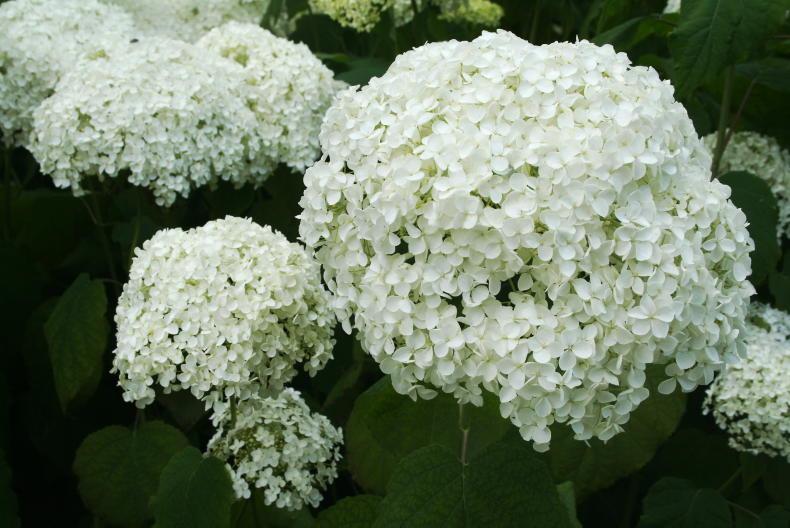


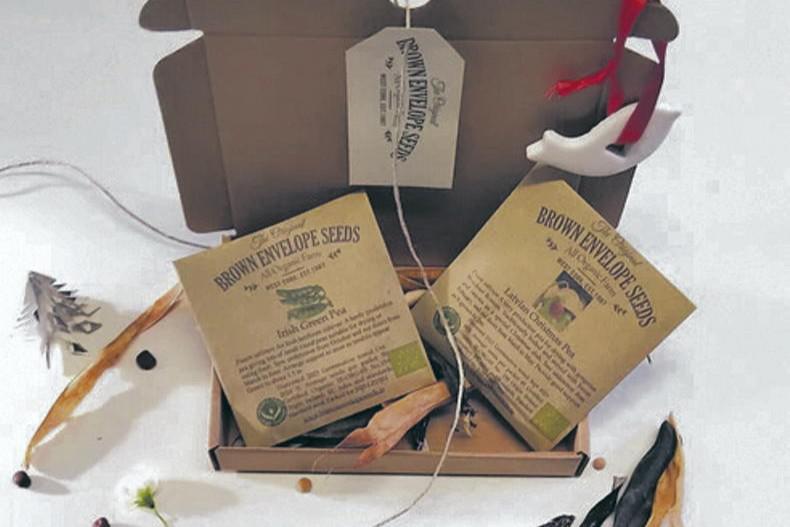
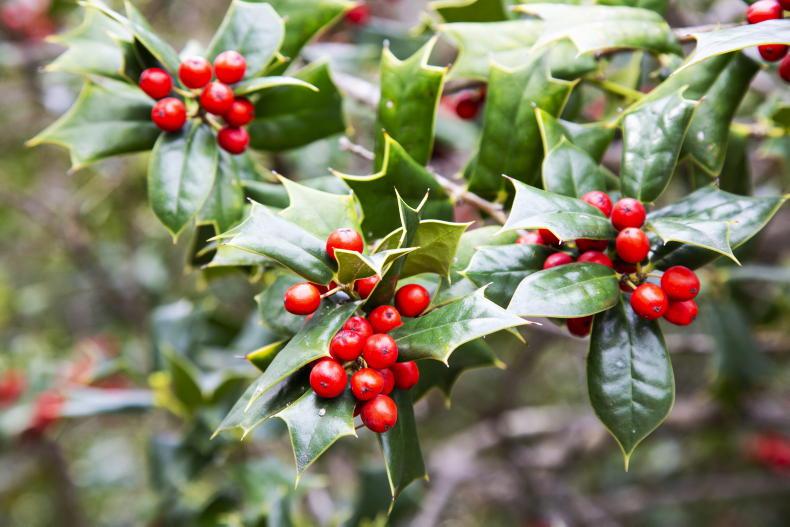
SHARING OPTIONS